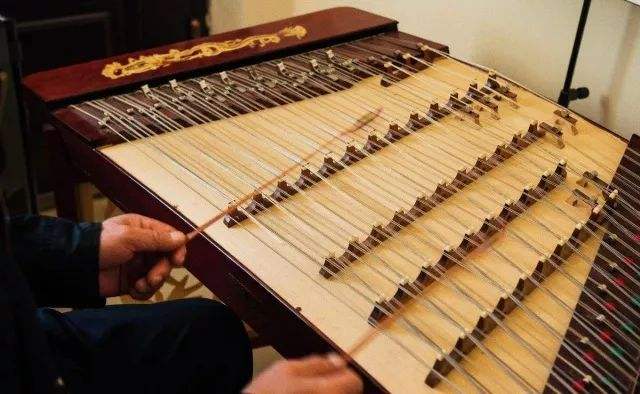The important role of arm movement in dulcimer playing and the basic methods of playing
Playing dulcimer relies on the joint movement of the muscle segments of all parts of the arm to generate striking force, which acts on the qin (also known as qin bamboo) to hit the strings, making the strings vibrate and sound, and transmit them through the piano code, causing air in the panel and the piano cavity. Vibrate, produce sound resonance. Whether this joint movement is correct or not plays a decisive role in the quality of performance.

The playing action is based on the cooperation of the arm, with the wrist and finger joints as the center of activity, using the thumb, food, and middle three finger holding method, relying on the wrist extension, rotation and finger twisting. "wrist-finger method" or "finger-wrist method"). From the perspective of the relationship between the arm, the wrist and the finger, the wrist is generally the main one, and the fingers and the arm are supplemented. The whole performance is an arm, wrist, and knuckle-driven, organically coordinated action. As far as the mechanical characteristics are concerned, the bones of various parts are in lever motion under the action of muscle tension. Its dynamic force and the resultant force composed of the elasticity, weight and motion acceleration of the piano are finally concentrated on the fingers (the point of dynamic action is at the junction of the thumb and the index finger.) The key head acts on the key head to form a force gathering point to hit the strings. The qinjian takes the wrist joint as the center of the circle, and moves in a slightly oblique upper and lower semi-circular arc in the three-dimensional space.
When playing, each part should keep the overall feeling and natural relaxation on the basis of drooping arms, extending both hands forward, and forming a straight line from the elbow joint with one finger and one head. Shoulders, elbows, and knuckles should form an optimal angle for playing with their adjacent bones. While playing:
The arm is mainly responsible for adjusting the strike position of the hand and the wrist (the upper arm moves longitudinally back and forth, the forearm moves longitudinally back and forth, and laterally left and right.) Cooperate with the hand and wrist to perform some larger and stronger playing movements. Up and down motion of the forearm should be minimized.
The extension and rotation of the wrist can be summed up as akin to a "swing"—a trigger-triggered action like a whip. The rotation range should not be too large (generally not more than 30 degrees), the horizontal distance between the two wrists should not be too wide, and the movements should be flexible and powerful to prevent "stringing", "cutting the string", "front poke", "back pull". "Pressure" and "Oblique split" and other phenomena.
The fingers are held by the center of the first segment of the thumb, and the center of the first joint of the index finger and the middle of the second segment of the middle finger are touched, and the hand shape should be natural. The thumb and forefinger should feel sharp, and the twist should be flexible, which plays a very important role in the changes of sound quality, volume, control tone, strength and speed. The middle finger is supported by the ring finger and the little finger synchronously. The three fingers should be naturally bent and close to each other.
During the whole performance, we should pay attention to the continuity, agility and the synchronicity of "flip", twist, and support, keep the feeling of point, and the distinct particles of pronunciation give people the feeling of "beads falling on a jade plate", and make this The articulation of the dots produces a flow of lines like a stringed instrument.
 渝公网安备 50010702504639号
渝公网安备 50010702504639号